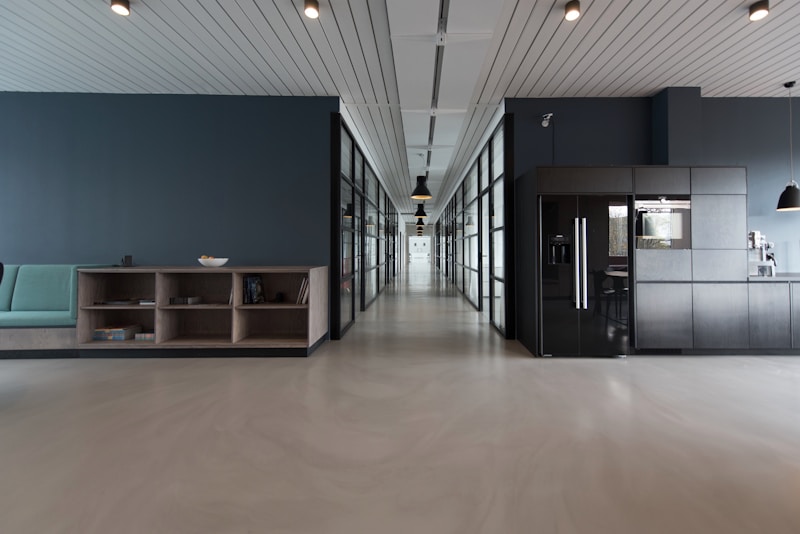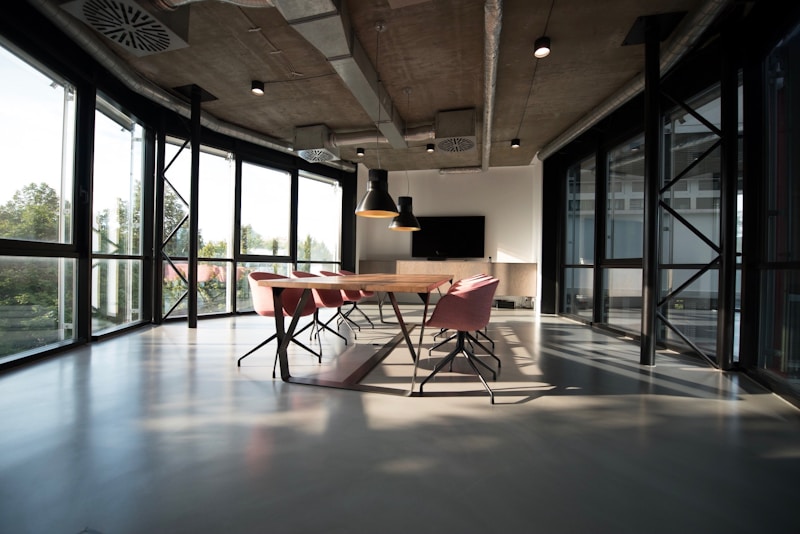Premier Office Properties
Managing Dallas-Fort Worth's most prestigious office buildings
Transforming office properties into thriving business environments throughout Dallas-Fort Worth
The office building isn't what it used to be. What once served as simple containers for desks and meetings has evolved into sophisticated environments that shape company culture, influence productivity, and determine competitive advantage. The pandemic didn't kill the office—it revealed its true purpose. Now, as companies wrestle with hybrid work models and employees demand more from their workplace, office building management has become less about maintaining four walls and more about orchestrating experiences that justify the commute.
Managing office buildings today requires understanding a fundamental shift: tenants no longer lease space, they invest in environments. They're not looking for square footage but for places that attract talent, foster collaboration, and embody their brand. This transformation demands property managers who think less like landlords and more like hospitality professionals, less like maintenance supervisors and more like experience designers.
Managing Dallas-Fort Worth's most prestigious office buildings
Creating workspaces that attract and retain top talent
The much-discussed "flight to quality" isn't just about newer buildings with better amenities. It's about properties that deliver measurable value to their tenants' businesses. Class A buildings in prime locations certainly benefit, but the real winners are properties—regardless of class—that offer superior management, thoughtful amenities, and genuine partnership with tenants.
This shift rewards sophisticated management. Tenants increasingly view real estate decisions through the lens of total occupancy cost, not just rent. They calculate the value of amenities that reduce employee turnover, the productivity gains from better air quality, the recruiting advantages of sustainable buildings.
The polarization between winner and loser buildings continues accelerating. Properties that don't adapt won't just struggle with occupancy; they'll face obsolescence. The middle market is disappearing, forcing every building to choose: compete on quality or compete on price.
Building technology has evolved from competitive advantage to baseline expectation. Tenants assume they'll have mobile apps for visitor management, touchless entry, and service requests. They expect conference rooms that actually work, WiFi that doesn't fail during important calls, and HVAC systems that respond to actual conditions.
But technology for technology's sake fails. The graveyard of proptech is littered with solutions that solved problems nobody had. Successful building technology deployment requires understanding what tenants actually value versus what sounds impressive in marketing materials.
Data analytics transform building operations from reactive to predictive. Smart buildings generate enormous data streams—occupancy patterns, energy consumption, equipment performance, tenant behavior. Properties that harness this information optimize everything from cleaning schedules to amenity offerings.
The amenity arms race has produced diminishing returns. Another rooftop deck or gym won't differentiate your building when every property has them. Today's tenants seek amenities that solve real problems: food options that accommodate diverse dietary needs, conference facilities that handle hybrid meetings seamlessly, outdoor spaces that enable actual work.
Flexibility has become the ultimate amenity. Tenants want spaces that adapt to their changing needs—conference rooms that become event spaces, lounges that transform for all-hands meetings. Properties that offer true flexibility create value that tenants can't replicate elsewhere.
Community programming separates good buildings from great ones. Successful properties actively foster connections through professional development, wellness programs, and genuine networking opportunities. When employees pressure employers not to relocate because they love the building community, you've created real value.
ESG considerations have moved from nice-to-have to must-have. Corporate tenants face pressure from investors, employees, and customers to demonstrate environmental responsibility. Properties without energy efficiency, water conservation, and waste reduction programs become leasing liabilities.
Sustainability certifications like LEED, WELL, and Energy Star are now expected. The new frontier involves actual performance, not just design intentions. Tenants want real data on energy consumption, carbon emissions, and indoor air quality.
The financial case grows stronger as technology costs drop and utility prices rise. LED retrofits pay back in months. Smart HVAC systems reduce waste while improving comfort. Sustainable buildings attract better tenants, achieve higher occupancy, and command premium rents.
Integrated systems that optimize performance and enhance experience
Touchless entry, visitor management, and elevator control via smartphone
Occupancy tracking, energy monitoring, and predictive maintenance
AI-powered HVAC optimization based on occupancy and preferences
Hybrid work isn't killing office demand—it's changing it fundamentally. Companies need less space per employee but better space overall. They're consolidating from multiple mediocre locations to single exceptional ones, trading private offices for collaboration spaces.
Managing buildings for hybrid occupancy requires rethinking everything. HVAC systems designed for full occupancy waste energy when buildings are half empty. Successful properties deploy dynamic management strategies that adjust to actual usage.
The Tuesday-through-Thursday phenomenon creates new challenges and opportunities. Smart operators find ways to monetize this pattern—offering space to multiple tenants, hosting events on quiet days, creating co-working arrangements for peak times.
Office building economics have become increasingly complex. Revenue optimization now includes percentage rent from amenity providers, parking maximization through dynamic pricing, and monetization of rooftop cellular installations.
Lease structures continue evolving as tenants demand flexibility and landlords seek certainty. Understanding which approach works for which tenant separates sophisticated operators from those still using outdated playbooks.
Capital allocation requires careful balance. The sweet spot involves strategic improvements that enhance tenant satisfaction, reduce operating costs, and position the property for future market conditions.
Spaces designed for productivity and inspiration
Office buildings no longer exist in isolation. The most successful properties integrate with their neighborhoods, offering retail, dining, and services that benefit both tenants and the community.
Transportation access has become more complex than proximity to highways or transit. It's about supporting diverse commute patterns—bike storage, EV charging, ride-share zones.
Properties that engage positively with their cities gain political support for entitlements, tax considerations, and development opportunities.
Despite all the technology and amenities, office building success ultimately depends on people. The property manager who knows tenants by name, the engineer who prevents problems before they occur—these human connections create intangible value.
Training and retaining quality staff has become increasingly critical. Properties that invest in staff development attract and retain the talent necessary for superior management.
Texas Tree Capital brings sophisticated management to office properties at a pivotal moment in the sector's evolution. We understand that success requires more than collecting rent and fixing leaks. It demands deep market knowledge, operational excellence, and genuine partnership with tenants navigating their own transformations.
Delivering exceptional results across all properties
Companies thriving in our managed properties

"Moving to this building transformed our company culture. The amenities and management support helped us attract top talent and improve productivity by 30%."
CEO, TechVentures Inc.

"The smart building technology alone saves us 20% on operating costs. The management team's responsiveness is unmatched in Dallas."
CFO, Global Finance Partners

"The flexible workspace options allowed us to scale from 20 to 200 employees seamlessly. This building grows with your business."
Director, Innovation Labs
Revitalizing office spaces for the modern workforce


Class A properties designed for today's businesses
Modern office buildings increasingly rely on integrated technology systems that enhance both operational efficiency and tenant experience. Building automation coordinates critical functions while generating data streams that inform strategic decisions.
Smart building technologies enable precise decision-making and resource allocation, transforming raw information into actionable insights about space utilization, energy consumption, and maintenance needs.
Strategic property management views each building as a dynamic asset capable of generating increasing returns through thoughtful optimization, market positioning, and revenue maximization.
Environmental considerations have become essential components of competitive office management, with systematic approaches to energy efficiency, waste reduction, and indoor air quality.
Comprehensive compliance programs protect ownership and tenants through regular inspections, documented procedures, and emergency preparedness that demonstrates responsible management.
Professional office building management creates value through operational efficiencies, strategic improvements, and strong tenant relationships that consistently outperform reactive management approaches.